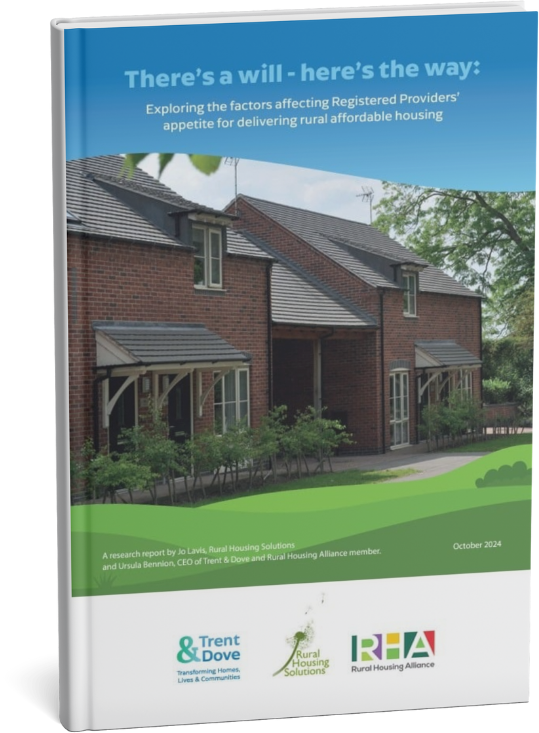T: 01822 851370 E: [email protected]
Visit RSN Survey about life in rural England to find out more.
Groundbreaking Research on Affordable Housing Delivery in Rural England
 A new study reveals critical factors affecting rural affordable housing supply and proposes solutions.
A new study reveals critical factors affecting rural affordable housing supply and proposes solutions.
Trent & Dove and Rural Housing Solutions have published a new report, "There’s a Will—Here’s the Way," illuminating the significant challenges and opportunities in developing affordable housing in rural areas. This research is critical as rural communities face increasing pressures from housing shortages, rising development costs, and complex planning processes.
The report draws on in-depth interviews with 11 Registered Providers (RPs), including Strategic Partners and non-strategic Partners.
Key findings reveal that while there is a willingness to develop rural housing, barriers such as financial viability, additional rural-specific costs, and planning delays impede progress.
Key Findings:
- Rural Housing Shortages: Only 9% of the housing stock in rural communities (populations of 3,000 or fewer) is made up of affordable homes, compared to 17% in urban areas.
- Increased Costs of Rural Development: Small-scale rural developments face unique cost pressures, including higher per-unit costs due to the inability to achieve economies of scale, rurality and remoteness, and the added requirements to meet Net Zero, biodiversity goals, and nitrate neutrality mitigation.
- Variable Commitment Among Housing Providers: While non-strategic Partners, particularly rural-specialist housing associations, remain committed to developing in small rural communities, larger Strategic Partners tend to focus on large developments in more accessible rural areas where financial viability is easier to achieve.
- Impact of Planning Delays: Local planning authorities often lack the capacity and resources to support rural schemes, leading to long delays and higher risks for developers
Recommendations:
- Better Grant Funding Through a Rural Multiplier: Introduce a targeted "Rural Multiplier" to offset the higher costs associated with rural schemes and introduce a rural programme approach for developments of fewer than 15 homes. This would help ensure the financial viability of these projects and support the move to Net Zero.
- National Rural Housing Targets: Set national targets for Homes England, including a goal that at least 10% of Affordable Homes Programme completions are delivered in parishes with populations of 3,000 or fewer.
- Simplified and Consistent Planning Policies: Introduce a Rural Exception Site Planning Passport to reduce costs, risks, and delays for rural schemes and encourage more Registered Providers to engage in rural development.
- Support for Local Authorities and Rural Housing Enablers: Increase resources for planning teams and Rural Housing Enablers to provide the critical groundwork needed to advance rural housing schemes.
- Dedicated Rural Champion in Homes England: Appoint a senior rural housing champion within Homes England to ensure rural issues receive the attention and support they need.
Ursula Bennion, CEO of Trent & Dove, and a member of the Rural Housing Alliance, said:
"Our findings demonstrate that housing providers are willing to build in rural areas but face significant financial and logistical challenges. To overcome these, we need targeted policies, improved grant funding, and stronger planning support.”
Jo Lavis from Rural Housing Solutions added:
"The research shows that rural affordable housing schemes may be small, but their impact is transformational for local communities. By addressing these barriers, we can deliver the homes needed to sustain thriving rural areas."
This report calls on Homes England, government departments, and local authorities to act decisively to ensure rural housing development becomes a priority and that these communities do not continue to be left behind.
The full report can be found here
 |
Trent and Dove Housing Association is a member of the Rural Services Network.



